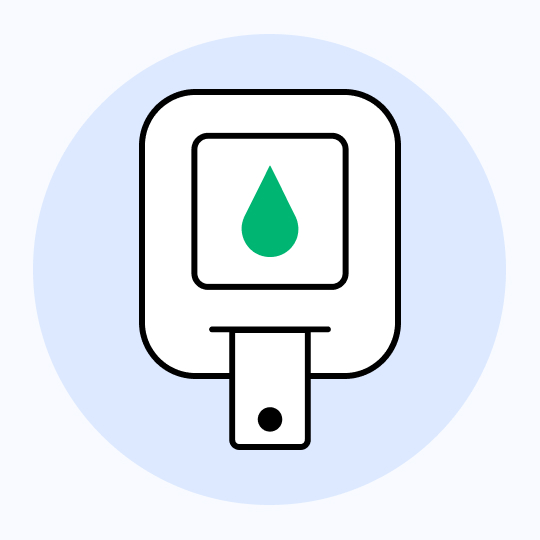Written by Chelsea Myer, CHES, CPT (Certified Health Coach) and Kimberly Sassenrath, PharmD, BCPS, BCACP (Clinical Pharmacist/Director of Clinical Services)
Diabetes is a common disease state affecting 13% of all US adults and 26.8% of adults aged 65 and old A major component of the development of diabetes is something called insulin resistance. This occurs when the body does not respond normally to the hormone in our body called insulin. There are many factors that can increase the risk of developing insulin resistance such as poor diet, being overweight, physical inactivity, and family history. Read below to learn more information about insulin resistance and ways to help reverse it!

What is insulin resistance?
Our body uses a form of sugar, known as glucose, as its main source of energy. When we eat foods high in sugar or carbohydrates (such as bread, pasta, etc.) our body turns these carbohydrates and sugars into glucose. One of the organs in our body, called the pancreas, releases a hormone called insulin to allow glucose to go from the blood into our cells (where our body can then use the sugar as energy). It can be helpful to think of an analogy. Imagine a worker was having to shovel coal into an incinerator. The worker is like insulin in our bodies, it helps shovel the coal, or sugar, from the blood to the incinerator, or cells, where it is used as energy for our body.
When we start eating more and more carbohydrates and sugars a large amount of sugar enters the blood stream. High amounts of sugar in the blood can be damaging to the body and needs to be moved into the cells quickly. To overcome this large amount of sugar, the pancreas will release even more insulin to try and get the sugar into the cells. Using our analogy, eating a large amount sugar is like having an even larger amount of coal for the worker to shovel. Eventually it becomes too much for one worker, so more workers (insulin) must be released to help shovel the coal. However, when we chronically eat diets high in carbohydrates and sugars, our pancreas continually has to release more insulin. After a while, our cells stop responding to all the insulin that is released and become “resistant”. In our analogy, this would be like if the incinerator was full. Despite having many workers, they can barely fit any more coal into the incinerator and without the workers actively shoveling coal, the amount of unburned coal, or blood sugar continues to build. To prevent all the coal piling up, the coal starts getting stored in other areas. Our body will take the excess sugar in our blood and start converting it to fat cells where the body can then store it as body fat, and we will see an increase in weight gain.
How do you know if you have insulin resistance?
Unfortunately, there is not one test to tell you if you have insulin resistance. But there a few tests that can help your provider determine if you may have insulin resistance. A combination of high blood sugar levels, high LDL (“bad cholesterol”), high triglycerides (a kind of fat in the blood), and low HDL (“good cholesterol”) are clinical indicators of insulin resistance. Another potential sign of insulin resistance is being overweight, especially with a lot of weight held around the stomach. (2)

What can make insulin resistance worse?
Insulin resistance is a major factor in the development of diabetes. In patients with poorly controlled diabetes, providers may have to prescribe injectable insulin, a medication that is like our body’s natural insulin, to help lower blood sugar. The extra insulin will help lower blood sugar, however, over time, the additional amounts of insulin can make insulin resistance worse. More “workers” in the form of insulin can help shovel more coal, but overtime this can cause the incinerator to fill up again and cause additional blood sugar to be stored as fat. This is why we often see insulin use lead to weight gain in many people with diabetes. There is a time and place for the use of insulin to help lower blood sugars — but using other medications that help reduce insulin resistance and improve insulin sensitivity can provide longer benefits overtime. Our clinical pharmacists at ivira are always happy to review your medications and conditions to assess if you may have insulin resistance and discuss your medications in detail. One of the biggest factors to help with insulin resistance is proper diet, exercise, and weight loss.
How can we alleviate insulin resistance or improve insulin sensitivity through lifestyle changes?
Physical Activity:
When we think of the benefits of exercise, we may simply think of weight loss or muscle gain. However, physical activity can provide so many more benefits that cannot always be seen physically. One of these benefits includes the increase of insulin sensitivity in the body. We know that excess adiposity (excess fat) in the waistline can contribute to insulin resistance, but regular exercise results in reduction of body fat—increasing cellular insulin sensitivity In fact, a single bout of moderate-intensity endurance exercise increases whole-body glucose uptake for at least 48 hours into our bodies’ recovery time. Regarding insulin sensitivity, the benefits from physical activity are optimal 30 minutes post-meal. (5)
Physical activity does not have to be all-or-nothing: you do not need to go to the gym, lift heavy weights, run for miles, and over-work your body. While resistance and endurance training are great, there are more ways to be active in your daily life that are beneficial for those who may be new to exercise. Try going for a walk, gardening, taking the stairs throughout the day, going for a walking meeting, or even simply cleaning your house. Any activities that increase your heart rate and get the body moving are considered “physical activity.” Start small, with bouts of movement for 5-10 minutes, a few times throughout your day. Work your way up to more activity and exercise over time, with an eventual goal of 150 minutes of moderate physical activity per week. Reach out to one of our ivira health coaches or personal trainers for assistance if you’d like to learn more.

Stress Reduction:
Something else that typically cannot be physically seen in our bodies includes chronic stress. Stress can take a toll on our physical and mental health, and one of the main reasons is due to the release of cortisol. Cortisol is a steroid hormone produced by our adrenal glands (above our kidneys). While we need cortisol for many reasons, such as responding to danger with fight or flight, cortisol in excessive amounts can be detrimental to our health. Symptoms of too much cortisol include weight gain around the stomach, acne, high blood pressure, irregular periods, and muscle weakness.Cortisol can also cause our body to release more insulin which can lead to or worsen insulin resistance.Reducing stress, and as a result reducing the release of cortisol, can be accomplished in many ways through lifestyle changes. Physical activity is an excellent stress-reduction method—and not only would it assist in stress relief, but as we just learned, it can also improve insulin sensitivity. Another way to reduce stress is to engage in mindfulness: breathing exercises, meditation, mindful walks, etc. Breathing exercises before going to bed at night can signal our nervous system to lower our heart rate and relieve stress.
Nutrition:
As mentioned above, what we eat has a large impact on insulin resistance. So, what can we do? Eating a well-balanced diet is crucial to the increase of insulin sensitivity. We do not need to fully restrict ourselves from foods we enjoy…but we do want to increase our intake of nutrient-dense foods. Foods that assist in reducing insulin resistance include fibrous vegetables, legumes, protein-rich foods, and low-glycemic fruits. For example: greens and beets, beans and chickpeas, lean meats (chicken, turkey), and berries. Avoiding high carbohydrate and sugary foods in excess like pasta, white bread, and sweets can help reduce high blood sugar. Another way to assist in the reduction of glucose concentration is to engage in physical activity about 30 minutes after meals. Going for a 15–20-minute walk after mealtimes can result in the reduction of insulin resistance and help our muscles use that excess glucose as “fuel” for activity. (5)
Implementing lifestyle changes can be difficult, we understand. Reducing insulin resistance is crucial to our health and can help us to avoid chronic conditions such as Type II Diabetes and Metabolic Syndrome. If you would like assistance in healthy lifestyle changes or nutrition counseling, please feel free to reach out to ivira Health and speak with a Health Coach or Registered Dietitian Nutritionist.
References:
- National Diabetes Statistics Report. Centers for Disease Control and Prevention. 2020. CDC. https://www.cdc.gov/diabetes/pdfs/data/statistics/national-diabetes-statistics-report.pdf
- Insulin and Diabetes. Centers for Disease Control and Prevention. Aug 2021. https://www.cdc.gov/diabetes/basics/insulin-resistance.html
- Venkatasamy VV, Pericherla S, Manthuruthil S, Mishra S, Hanno R. Effect of Physical activity on Insulin Resistance, Inflammation and Oxidative Stress in Diabetes Mellitus. J Clin Diagn Res. 2013;7(8):1764-1766. doi:10.7860/JCDR/2013/6518.3306
- Magkos, F., & Sidossis, L. S. Exercise and Insulin Sensitivity-Where Do We Stand? You’d Better Run! US Endocrinology. (2008);4(1), 23- 26. https://doi.org/10.17925/USE.2008.04.01.23
- Reynolds AN, Venn BJ. The Timing of Activity after Eating Affects the Glycaemic Response of Healthy Adults: A Randomised Controlled Trial. Nutrients. 2018;10(11):1743. Nov 2018. doi:10.3390/nu10111743
- Thau, L., Gandhi, J., & Sharma, S. Physiology, Cortisol. StatPearls. https://www.ncbi.nlm.nih.gov/books/NBK538239/. May 2020. Accessed April 5, 2022.
- Yan YX, Xiao HB, Wang SS, et al. Investigation of the Relationship Between Chronic Stress and Insulin Resistance in a Chinese Population. J Epidemiol. 2016;26(7):355-360. doi:10.2188/jea.JE20150183
- Understanding cortisol, the stress hormone – Healthy Relationships. https://www.canr.msu.edu/news/understanding_cortisol_the_stress_hormone. Nov 18, 2018. Accessed April 4, 2022.

